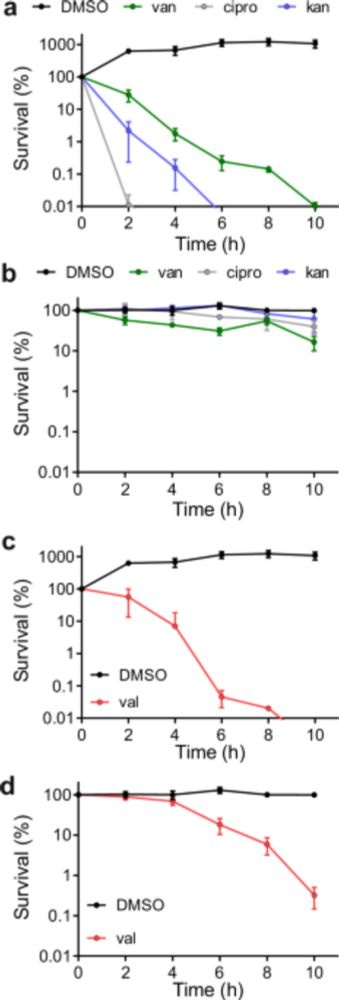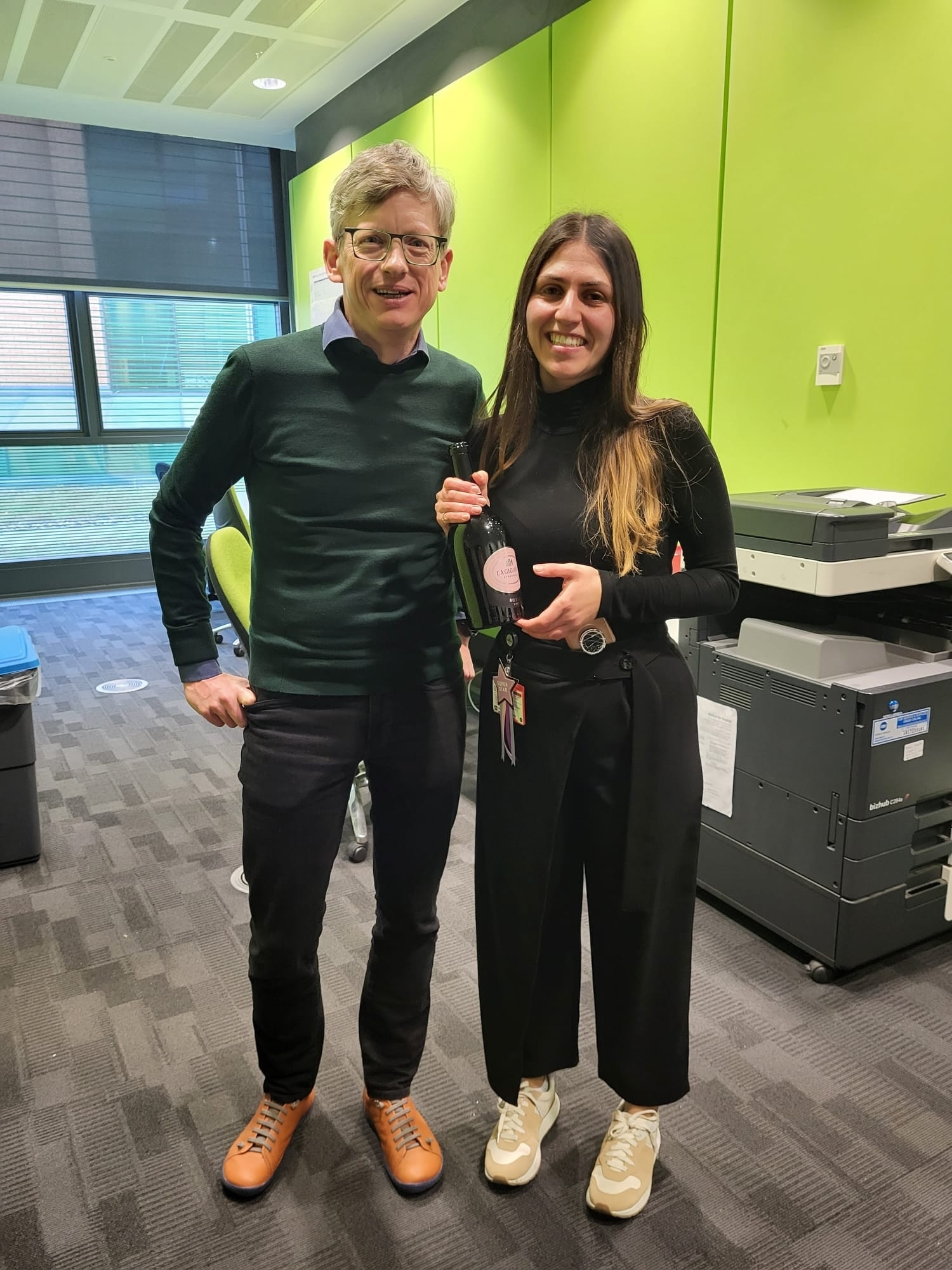
Membrane depolarization kills dormant Bacillus subtilis cells by generating a lethal dose of ROS #NatureComms@henrikstrahl.bsky.socialwww.nature.com/articles/s41...

The bactericidal activity of several antibiotics partially relies on production of reactive oxygen species (ROS), which requires the Fenton reaction. Here, the authors show that membrane depolarizatio...
Big congratulations to Maria Dakes Stavrakaki from my lab for defending her PhD yesterday! Big thanks also go to the expert examiners @dirkscheffers.bsky.social and Frank Sargent (who managed to evade the photo).

This is a great review about homeostasis, crowding and related processes in bacteria by Begoña Monterroso et al. Worth reading! pubs.acs.org/doi/full/10....

Macromolecular crowding affects the activity of proteins and functional macromolecular complexes in all cells, including bacteria. Crowding, together with physicochemical parameters such as pH, ionic ...
A gentle appeal to colleagues using voltage sensitive dyes. Maintaining membrane potential needs metabolism. Washing cells nutrient-free in buffer (for staining purposes) leads to quick depolarisation. Can be used as +- control but not for much more.. mic.microbiologyresearch.org/pubmed/conte...

Transmembrane potential is one of the main bioenergetic parameters of bacterial cells, and is directly involved in energizing key cellular processes such as transport, ATP synthesis and motility. The most common approach to measure membrane potential levels is through use of voltage-sensitive fluorescent dyes. Such dyes either accumulate or are excluded from the cell in a voltage-dependent manner, which can be followed by means of fluorescence microscopy, flow cytometry, or fluorometry. Since the cell’s ability to maintain transmembrane potential relies upon low and selective membrane ion conductivity, voltage-sensitive dyes are also highly sensitive reporters for the activity of membrane-targeting antibacterials. However, the presence of an additional membrane layer in Gram-negative (diderm) bacteria complicates their use significantly. In this paper, we provide guidance on how membrane potential and its changes can be monitored reliably in Gram-negatives using the voltage-sensitive dye 3,3′-dipropylthiadicarbocyanine iodide [DiSC3(5)]. We also discuss the confounding effects caused by the presence of the outer membrane, or by measurements performed in buffers rather than growth medium. We hope that the discussed methods and protocols provide an easily accessible basis for the use of voltage-sensitive dyes in Gram-negative organisms, and raise awareness of potential experimental pitfalls associated with their use.
Still plenty of time to apply for this AMR PhD studentship. If interested, please don't hesitate to contact me despite the holidays.
If you are looking for an AMR-themed PhD project and want to learn cool techniques such as microscopy and chemical genetics, come join my lab at Newcastle University. This project is a close collaboration with Manuel Banzhaf (Newcastle) and Gary Sharples (Durham). www.findaphd.com/phds/project...

PhD Project - BBSRC NLD Doctoral Training Partnership: Interplay between bacterial multidrug efflux and outer membrane permeability creates an unexpected vulnerability towards antibiotics at Newcastle...
Huge congratulations Maddie Humphrey for a successful PhD viva with minimal corrections only. Very well done!! Big thanks also for the expert examiners Henk Haagsman (Utrecht) and Kasia Mickiewicz (Newcastle).

If you are looking for an AMR-themed PhD project and want to learn cool techniques such as microscopy and chemical genetics, come join my lab at Newcastle University. This project is a close collaboration with Manuel Banzhaf (Newcastle) and Gary Sharples (Durham). www.findaphd.com/phds/project...

PhD Project - BBSRC NLD Doctoral Training Partnership: Interplay between bacterial multidrug efflux and outer membrane permeability creates an unexpected vulnerability towards antibiotics at Newcastle...
We are very happy to have Georgia Isom (Oxford) today in Newcastle for a talk (hosted by Kasia Mickiewicz as evident from the photo).

Please see below for an exciting opportunity to join microbiology at Newcastle, and help us build target-based antibiotic discovery! www.jobs.ac.uk/job/DCX827/l...

Explore an exciting academic career as a Lecturer/ Senior Lecturer in Antimicrobial Drug Discovery. Don't miss out on other academic jobs. Click to apply and explore more opportunities.

